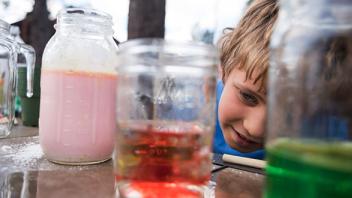A clear, glass jar
Use this as a rain gauge. Using a ruler and a permanent marker, mark the jar with a line every quarter inch or so up to 4 inches. Place the jar outside before a rainstorm. Encourage your child to predict or guess how much rain will fall. Ask your child to write the prediction down on a piece of paper. After the storm, check your gauge. Compare the actual total to the predicted total. Talk about the information gathered.
Measuring cups
Measuring cups provide a great opportunity to learn concepts of volume, including vocabulary words such as more, less, and equal to. Fill a plastic bin with uncooked rice, un-popped popcorn, dried beans, or noodles. Allow your child to explore using all different sized measuring cups including teaspoons, tablespoons, and cup measurers. Pouring from one sized container into another helps children quickly see differences in volume. Ask your child questions, “Which container holds the most? Which holds the least? How many small scoops equals one big scoop? How many noodles do you think will fit into this container? How many popcorn seeds do you think will fit? Let’s count and find out!”
A hammer
The claw end of a hammer is a great example of a simple machine. Use an old piece of wood and help your child hammer a nail into it (but not all the way down!). Use the claw end of the hammer to pry the nail out of the wood. That simple exercise is a great example of how levers — a simple machine — work in our everyday environment. Ask your child to look around the house or community for other types of simple machines. Some examples include a ramp (also called an incline plane) to enter a building or on a delivery truck, the lever used on the handle on a toaster, or a wedge to hold a door open.
Oil and water
You and your child can have fun investigating and observing different liquids. Working together with oil or corn syrup and water, compare and contrast the smell, color, and thickness or density of the different liquids. Encourage your child to use descriptive words to describe the stickiness and weight of each liquid. Remind your child that scientists have to use careful observation as they do their experiments, and that their close study of the different liquids is good practice in noticing differences.
A puzzle
Puzzles provide great brain exercise. Jigsaw puzzles provide an opportunity to concentrate, analyze, sequence, and problem solve. Talk about puzzle strategy — for example, will you work on creating a frame? Will you choose one area to focus on? How can your child help pick the pieces for a certain area of the puzzle? Simple puzzles can be made by cutting magazine or calendar pictures into different sections. There are several online puzzle makers as well. Choose something that will not be too overwhelming for your child and work through the puzzle together.
Recommended children’s books
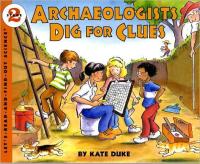
Archaeologists Dig for Clues
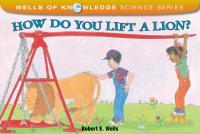
How Do You Lift a Lion?
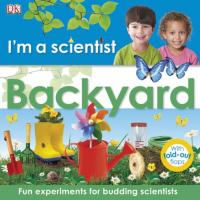
I’m a Scientist: Backyard
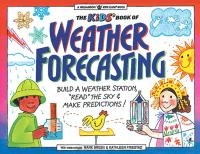
The Kid’s Book of Weather Forecasting
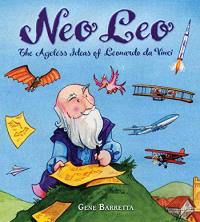
Neo Leo: The Ageless Ideas of Leonardo da Vinci
Download this article in Spanish
Subscribe to Growing Readers!
Get our free monthly parent tips — in English and Spanish — delivered right to your inbox!
